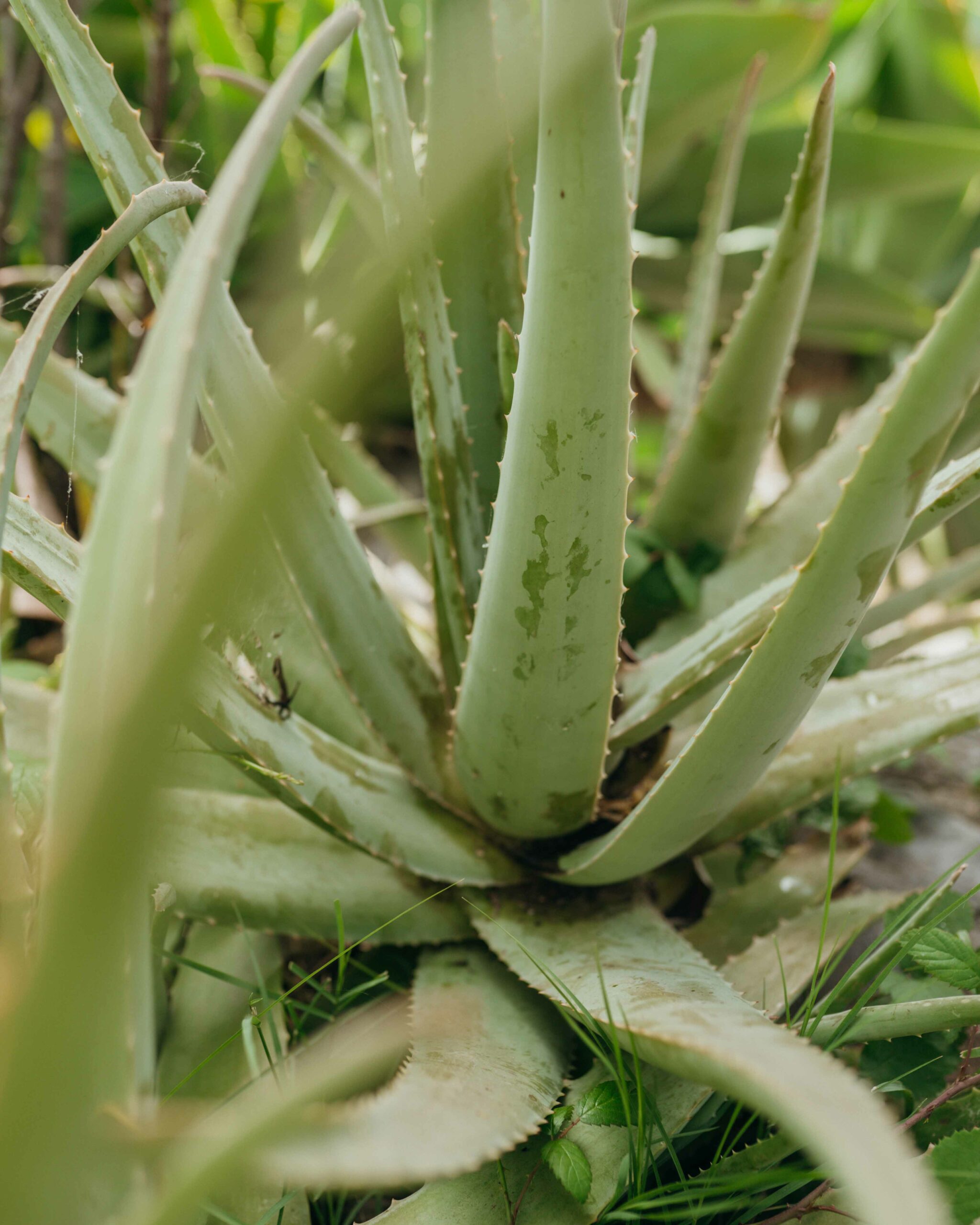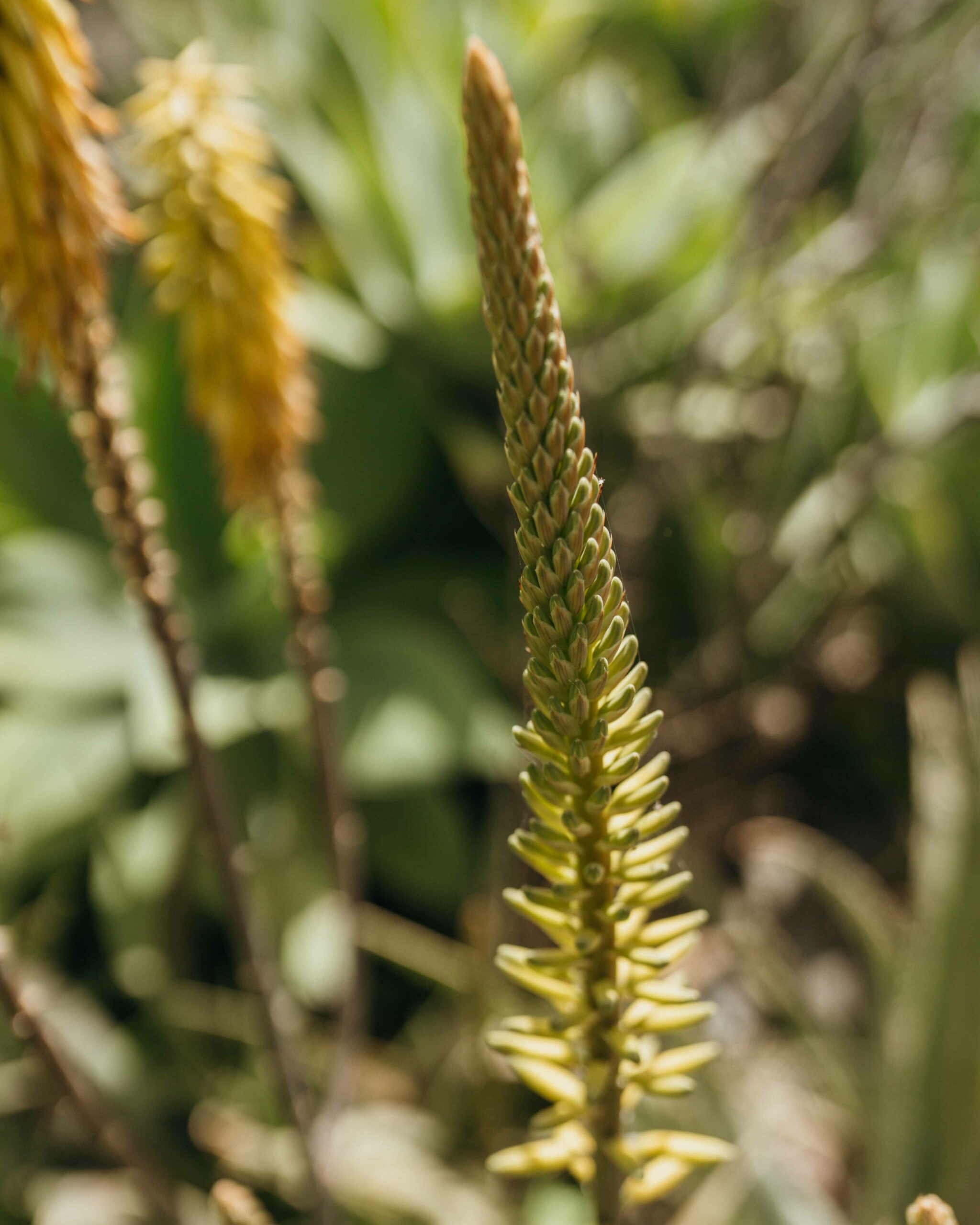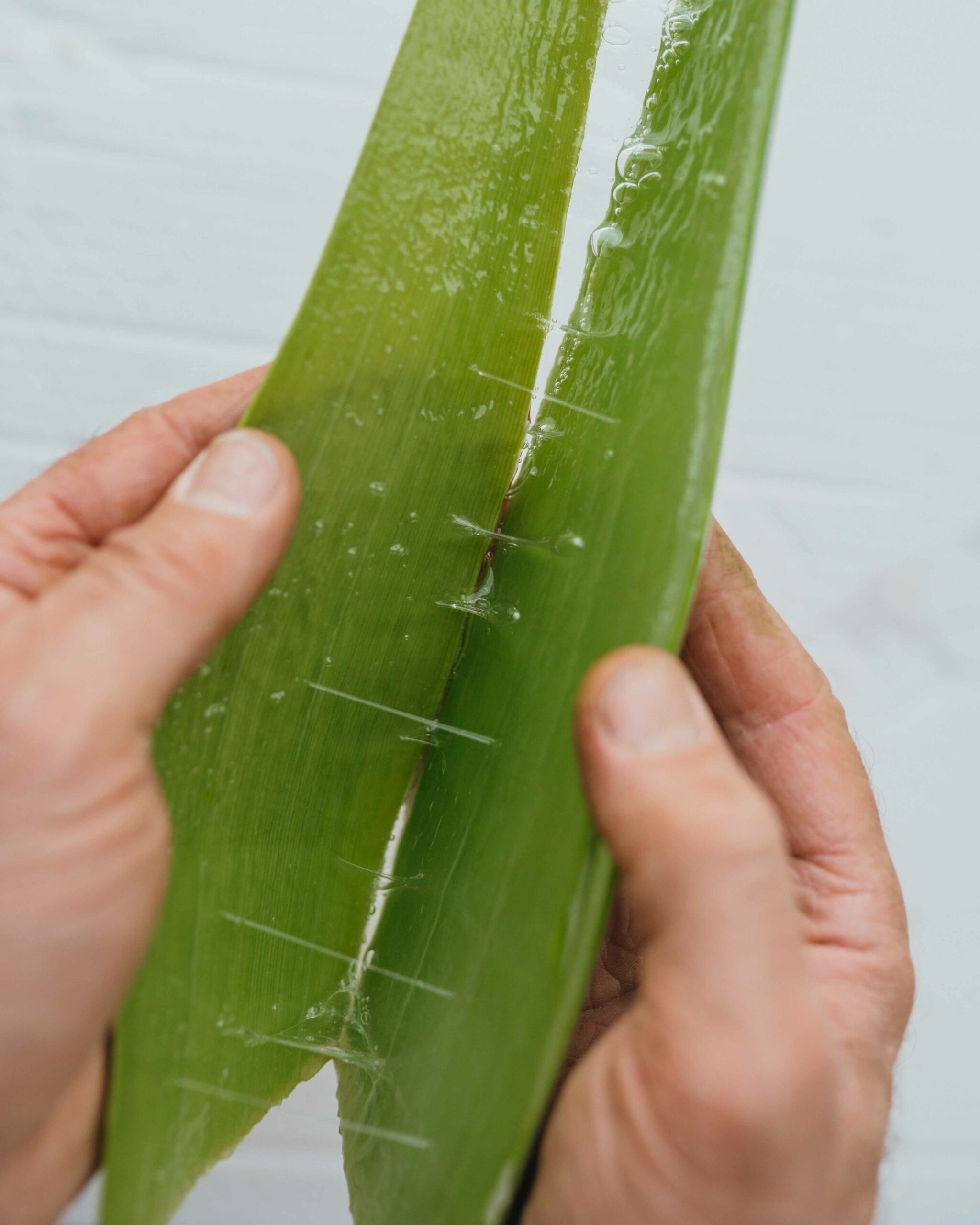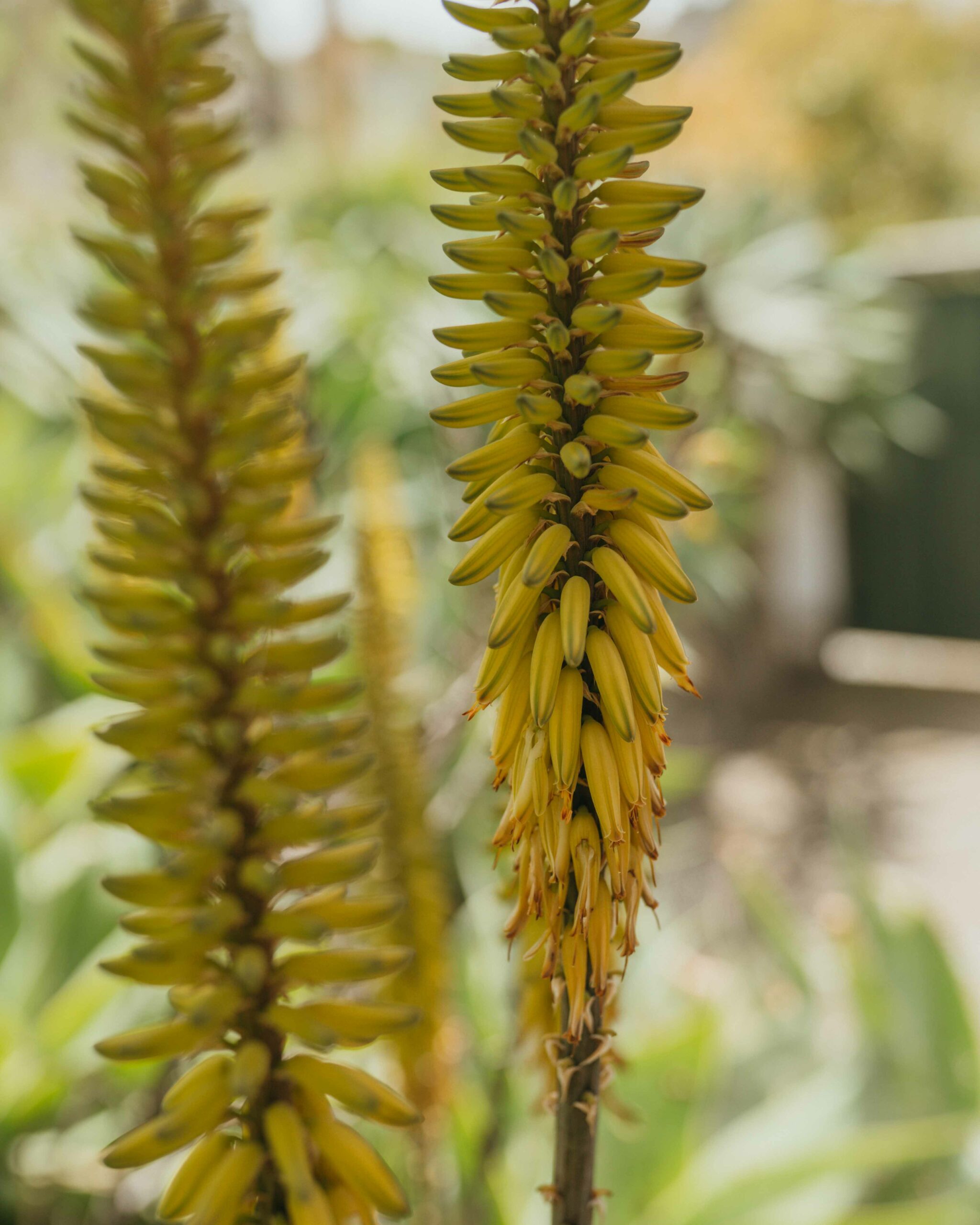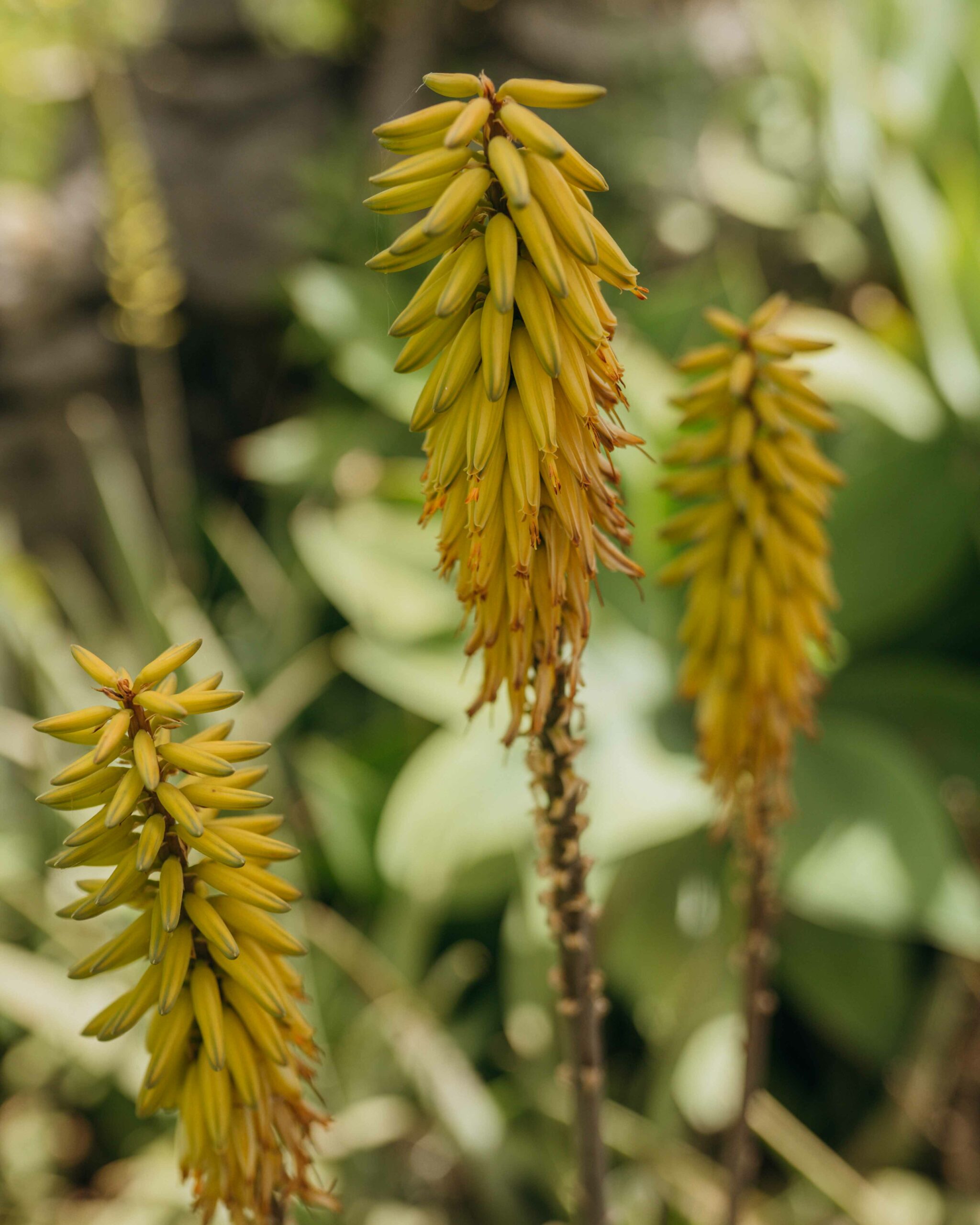Aloe vera
ALOE VERA
Englische Bezeichnung: Aloe Vera
Spanische Bezeichnung: Aloe Vera
Familie
Affodillgewächse (Asphodeloideae)
Hauptbestandteile:
Anthrachinone, Polysaccharide, Prostaglandine, Tannine, Steroide, organische Säuren, Magnesium, Lactat, Harze, Mannine, Enzyme, Protein, Aminosäuren, Saponine, Lignine, Monosulfonsäure und Lektine
Verwendung:
Frische Blätter, getrocknetes Blattharz, und aus frischen Blättern extrahiertes Gel
Wirkungsweisen:
-
Schmerzlindernd
-
Antibakteriell
-
Entzündungshemmend
-
Antimikrobiell
-
Antiviral
-
Bitter
-
Abführend
-
Menstruationsfördernd
-
Abführmittel
-
Magenstärkend
-
Wundheilend
Geschmack:
Bitter
Energie:
Kühlend
Ernte-Hinweise:
-
mit einem scharfen Messer schneidet man ein reifes Blatt (mindestens 18 Monate alt) von der Basis der Aloe-Vera-Pflanze ab
-
dann verwendet man einen Löffel, um das dicke Gel der Pflanze herauskratzen
-
optional: in den Mixer geben und anschließend luftdicht in einem Glas verschließen
-
im Kühlschrank ist es einige Wochen lang haltbar
Der Name der Aloe vera stammt aus dem Arabischen alloeh, was „bittere, glänzende Substanz“ bedeutet. Vera kommt aus dem Lateinischen, versus, was „wahr“ bedeutet, ein Beweis für ihre Beliebtheit in der Kräuterkunde und als kosmetisches Mittel.
Wissenschaftler haben mehr als 75 aktive Inhaltsstoffe in der Aloe Vera identifiziert und glauben erstaunlicherweise, dass es noch einige unentdeckte Inhaltsstoffe gibt. Aloe vera ist vielseitig einsetzbar und wurde erfolgreich als Abführmittel und antimikrobielles Mittel, zur Stärkung des Immunsystems und wegen ihrer hautberuhigenden und verletzungshemmenden Eigenschaften verwendet.
Aloe vera hat einen natürlichen pH-Wert von 4,3, was sie zu einem hervorragenden Präparat für Haut und Haare macht. Darüber hinaus enthält Aloe vera eine Substanz, die als Aloin bekannt ist, ein natürlicher Sonnenschutz, der bis zu 30 Prozent der ultravioletten Strahlen der Sonne blockieren kann. Es ist genau diese Vielfalt der Aloe, die hilft, ihre weitreichenden klinischen und volkstümlichen Anwendungen zu erklären.
Äußerlich wird Aloe Vera zur Linderung von Hautproblemen, Wunden, Sonnenbränden, Erfrierungen und Fällen von chronischer und akuter Dermatitis verwendet. Als häufiger Bestandteil von Erste-Hilfe-Cremes enthält Aloe vera Salicylsäure und Magnesium, Substanzen, die synergetisch wirken, um Schmerzen zu lindern.
Innerlich wurde Aloe Vera als Abführmittel, zur Förderung der Menstruation, zur Unterstützung der Verdauung, zur Verringerung von Entzündungen, zum Ausgleich von Stoffwechselproblemen, zur Unterstützung der Nieren bei Steinen, zur Unterstützung während einer Chemotherapie und in jüngster Zeit auch als antivirales Mittel zur Verlangsamung der Ausbreitung von HIV und anderen Viren von einer Zelle zur anderen verwendet.
Referenzen/ References:
Gladstar, R. (2008). Rosemary Gladstar’s herbal recipes for vibrant health. Adams, MA: Storey Publishing.
Tenney, D. (1997). Aloe vera. Pleasant Grove, UT: Woodland Publishing.
Pizzorno, J.E., & Murray, M.T. (2013). Textbook of natural medicine (4th ed.). St. Louis, MO: Elsevier Churchill Livingstone.
Surjushe, A., Vasani, R., & Saple, D.G. (2008). Aloe vera: A short review. Indian Journal of Dermatology, 53(4), 163-166. https://doi.org/10.4103/0019-5154.44785
Family
Asphodelaceae
Parts Used:
Fresh leaves, dried leaf resin, and gel extracted from fresh leaves
Key Constituents:
Anthraquinones, polysaccharides, prostaglandins, tannins, steroids, organic acids, magnesium, lactate, resins, mannins, enzymes, protein, amino acids, saponins, lignins, monosulfonic acid, and lectins
Harvesting Guidelines:
-
using a sharp knife, cut a mature leaf (at least 18 months old) from the base of the aloe vera plant
-
then use a spoon to scrape out the thick gel of the plant
-
optional: put it in a blender and then seal it airtight in a jar
-
it can be kept in the refrigerator for several weeks
Actions:
-
Analgesic
-
Antibacterial
-
Anti-inflammatory
-
Antimicrobial
-
Antiviral
-
Bitter
-
Cathartic
-
Demulcent
-
Emmenagogue
-
Emollient
-
Laxative
-
Stomachic
-
Vulnerary
Taste:
Bitter
Energy:
Cooling
Aloe vera’s name comes from the Arabic alloeh, meaning “bitter, shiny substance.” Vera comes from the Latin, versus, which means “true,” a testament to its popularity in herbalism and as a cosmetic agent.
Scientists have identified more than 75 active constituents in aloe vera, and amazingly believe there are some constituents yet undiscovered. Aloe vera has a diverse range of uses, and has been used successfully as a laxative and antimicrobial, for immune potentiation, and for its skin-soothing and vulnerary properties.
Aloe vera has a natural pH of 4.3, which makes it an excellent preparation for skin and hair. What’s more, aloe vera contains a substance known as aloin, a natural sunscreen capable of blocking up to 30 percent of the sun’s ultraviolet rays.
It is precisely aloe’s diversity, in fact, that helps to explain its wide-ranging clinical and folk applications.
Externally, aloe vera has been used to soothe radiation burns, skin problems, wounds, sunburns, frostbite, and cases of chronic and acute dermatitis. A common ingredient in first-aid creams, aloe vera contains salicylic acid and magnesium, substances that work synergistically to ease pain. Internally, aloe vera has been used as a laxative, to promote menstruation, aid in digestion, reduce inflammation, balance metabolic issues, support the kidneys in cases of stones, provide support during chemotherapy, and more recently, as an antiviral to slow the spread of HIV and other viruses from one cell to another.
Referenzen/ References:
Gladstar, R. (2008). Rosemary Gladstar’s herbal recipes for vibrant health. Adams, MA: Storey Publishing.
Tenney, D. (1997). Aloe vera. Pleasant Grove, UT: Woodland Publishing.
Pizzorno, J.E., & Murray, M.T. (2013). Textbook of natural medicine (4th ed.). St. Louis, MO: Elsevier Churchill Livingstone.
Surjushe, A., Vasani, R., & Saple, D.G. (2008). Aloe vera: A short review. Indian Journal of Dermatology, 53(4), 163-166. https://doi.org/10.4103/0019-5154.44785
Familia
Asphodelaceae
Partes aprovechables:
Fresh leaves, dried leaf resin, and gel extracted from fresh leaves
Principales Constituyentes:
Anthraquinones, polysaccharides, prostaglandins, tannins, steroids, organic acids, magnesium, lactate, resins, mannins, enzymes, protein, amino acids, saponins, lignins, monosulfonic acid, and lectins
Indicaciones de Cosecha:
Siempre se cosechan las hojas inferiores para así garantizar que la col rizada volverá a crecer desde el centro y se obtendrá una cosecha más generosa.
Propiedades:
– Analgésico
– Antibacteriano
– Antiinflamatorio
– Antimicrobiano
– Antiviral
– Amargo
– Catártico
– Demulcente
– Emenagogo
– Emoliente
– Laxante
– Estomacal
– Vulnerable
Sabor:
Amargo
Energía:
Refrescante
El nombre del aloe vera viene del árabe alloeh, que significa „sustancia amarga y brillante“. Vera viene del latín, versus, que significa „verdadero“, un testimonio de su popularidad en la herbolaria y como agente cosmético.
Los científicos han identificado más de 75 componentes activos en el aloe vera, y sorprendentemente creen que hay algunos componentes aún por descubrir. El aloe vera tiene una amplia gama de usos, y se ha utilizado con éxito como laxante y antimicrobiano, para potenciar el sistema inmunológico y por sus propiedades calmantes y vulnerarias para la piel.
El aloe vera tiene un pH natural de 4,3, lo que lo convierte en un excelente preparado para la piel y el cabello. Además, el aloe vera contiene una sustancia conocida como aloína, un protector solar natural capaz de bloquear hasta el 30% de los rayos ultravioleta del sol.
De hecho, es precisamente la diversidad del aloe la que ayuda a explicar su amplia gama de aplicaciones clínicas y populares.
Externamente, el aloe vera se ha utilizado para aliviar quemaduras por radiación, problemas de la piel, heridas, quemaduras solares, congelaciones y casos de dermatitis crónica y aguda. El aloe vera es un ingrediente habitual en las cremas de primeros auxilios y contiene ácido salicílico y magnesio, sustancias que actúan de forma sinérgica para aliviar el dolor. Internamente, el aloe vera se ha utilizado como laxante, para favorecer la menstruación, ayudar a la digestión, reducir la inflamación, equilibrar los problemas metabólicos, apoyar a los riñones en casos de cálculos, proporcionar apoyo durante la quimioterapia y, más recientemente, como antiviral para frenar la propagación del VIH y otros virus de una célula a otra.
